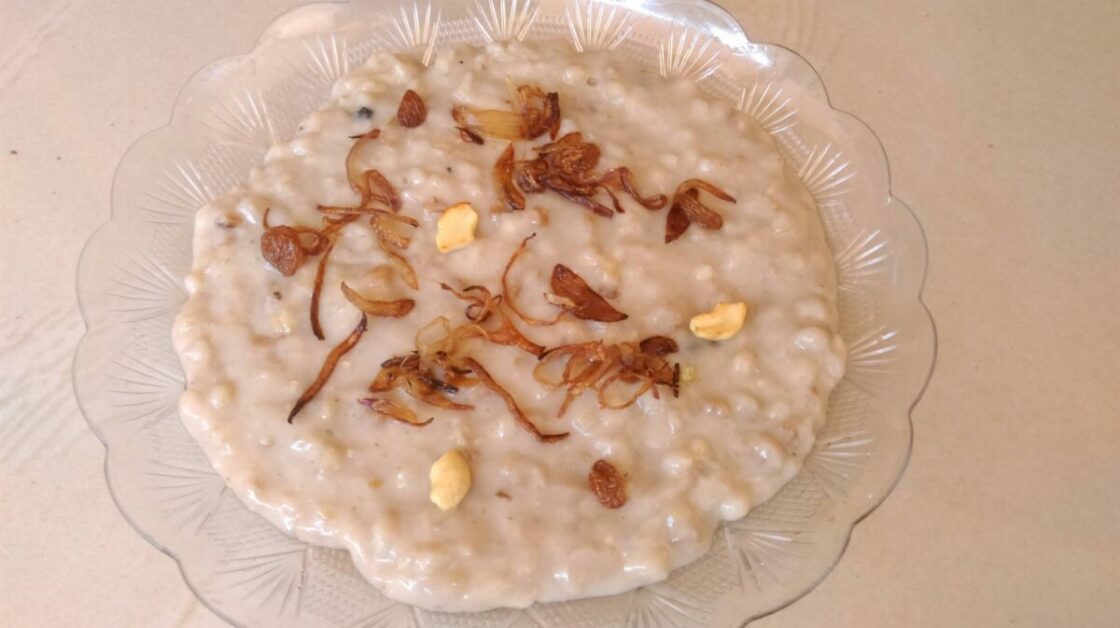Tips and Tricks for Perfect Ambalapuzha Palpayasam
Ambalapuzha Palpayasam is more than just a dessert; it is a symbol of devotion, simplicity and divine taste. In this article, we explore the history, significance, traditional recipe, and some popular variations of this beloved dessert.
History and Significance of Ambalapuzha Palpayasam
The Ambalapuzha Palpayasam is intri tradition, and Kerala’s rich culinary heritage. This sweet delicacy, originating from the revered Ambalapuzha Sri Krishna Temple, is cherished for itsnsically linked to the Ambalapuzha Sri Krishna Temple, located in the Alappuzha district of Kerala. Dedicated to Lord Krishna, this temple is renowned for its unique traditions and the legendary Ambalapuzha Palpayasam, which is offered as ‘prasadam’ (a religious offering) to devotees.
The dish represents more than just a sweet treat. It symbolizes devotion and is believed to bring blessings and prosperity to all who partake in it. Devotees cherish the payasam as an offering to Lord Krishna, connecting them to the temple’s spiritual essence and longstanding rituals.
The Legend Behind Ambalapuzha Palpayasam
The origin of Ambalapuzha Palpayasam is steeped in legend. It is said that Lord Krishna once appeared in the guise of a sage and challenged the king of Ambalapuzha to a game of chess. The reward for the victor started small but grew exponentially with each move. When the king was unable to fulfill the sage’s demand, he pleaded for mercy. The sage then revealed himself as Lord Krishna and agreed that the king could offer payasam to devotees every day as compensation. Thus began the tradition of serving Ambalapuzha Palpayasam as prasadam at the temple.
What is Ambalapuzha Paal Payasam?
Ambalapuzha Paal Payasam is a traditional Kerala dessert made with three simple ingredients: parboiled rice, thickened milk, and jaggery. Unlike other variations of payasam, this one is characterized by its minimalistic ingredients and slow-cooking process, which gives the dessert a unique flavor and texture.

Unique Features of Ambalapuzha Paal Payasam:
- Traditional Ingredients: Parboiled rice, full-fat milk, and jaggery form the core of this dish. There are no added ingredients such as dry fruits or ghee, which are common in other types of payasam.
- Slow Cooking Process: The milk and rice are simmered together for hours, allowing the ingredients to meld and develop a rich, caramelized flavor. This slow process also gives the payasam its characteristic pink hue.
- Temple Rituals: The preparation of Ambalapuzha Paal Payasam follows strict temple rituals, adding a spiritual dimension to the dish. Cooking in bronze vessels further enhances its unique taste.
Popular Varieties of Paal Payasam
Ambalapuzha Paal Payasam has inspired various regional and cultural adaptations, each offering a unique twist to this beloved dessert. Let’s explore some of the most popular varieties of payasam that are widely enjoyed in Kerala, while also maintaining the authenticity of traditional Ambalapuzha Palpayasam.
1. Kerala Semiya Payasam
Kerala Semiya Payasam is a popular variation that replaces rice with vermicelli (semiya). Light and flavorful, this payasam is often served during festivals and celebrations. It is made with roasted vermicelli cooked in thickened milk, sweetened with sugar, and flavored with cardamom. The addition of fried cashews, raisins, and a dash of ghee enhances its taste, making it a delightful alternative to the traditional Ambalapuzha Paal Payasam.
2. Nei Payasam
Nei Payasam is a rich, decadent payasam known for its deep flavor, courtesy of the generous use of ghee (clarified butter) and jaggery. This variety combines rice with the rich taste of ghee and is often served during temple offerings and special occasions. Nei Payasam’s thick, dark texture and the caramel-like flavor of jaggery make it an indulgent treat, standing out from the lighter Ambalapuzha Paal Payasam.
3. Ari Payasam
Ari Payasam is a classic rice-based payasam that shares similarities with Ambalapuzha Palpayasam but is slightly different in preparation. Ari Payasam uses raw rice cooked in milk and jaggery, offering a smoother texture and a balanced sweetness. It is a staple in Kerala’s festive meals and temple feasts, known for its subtle, comforting flavor.
4. Temple Payasam
Temple Payasam refers to the payasams served as prasadam in temples across Kerala. It closely resembles Ari Payasam but often includes a blend of grains and spices for enhanced complexity. Like Ambalapuzha Paal Payasam, Temple Payasam is slow-cooked, allowing the flavors of jaggery and rice to develop over time, resulting in a rich, spiritually significant offering.
- Sweet Potato Payasam
Sweet Potato Payasam introduces an earthy sweetness to the traditional payasam by incorporating boiled and mashed sweet potatoes. Combined with thickened milk, jaggery, and a hint of cardamom, this variation offers a unique texture and taste that differentiates it from the classic Ambalapuzha Paal Payasam. This version is a wholesome, nutritious alternative, loved for its distinctive flavor.
6. Dates and Badam Payasam
Dates and Badam Payasam is a modern twist on the traditional recipe, offering a nutty flavor with the added richness of dates and almonds. This version stands out for its chewy texture, derived from the dates, and the crunch of almonds. The natural sweetness of dates reduces the need for extra sugar, making this payasam both healthy and flavorful. It’s a popular choice for those who enjoy a richer, more complex dessert compared to the straightforward Ambalapuzha Paal Payasam.
7. Ragi Green Gram Payasam
Ragi Green Gram Payasam is a health-conscious adaptation of the traditional dessert. Made with ragi (finger millet) and green gram, this variety is rich in nutrients, providing a wholesome alternative to the classic Ambalapuzha Palpayasam recipe. It combines the nutty taste of ragi with the earthy flavor of green gram, creating a delicious and nutritious payasam
8. Chakka Payasm
Chakka Payasam, or jackfruit payasam, is a tropical twist on the traditional recipe. This variety incorporates ripe jackfruit, which is cooked with jaggery and coconut milk, imparting a sweet and slightly tangy flavor. The jackfruit’s unique tropical notes make this payasam a favorite during the summer months, offering a refreshing change from the usual Ambalapuzha Paal Payasam.
9. Rice Payasam
Rice Payasam, a beloved dessert across Kerala, is the foundation for many varieties, including Ambalapuzha Palpayasam. This simple dish consists of rice, milk, and jaggery, slow-cooked to perfection. Rice Payasam highlights the purity of its ingredients, with no added spices or flavorings, making it a comforting, satisfying treat enjoyed in homes and temples alike.
10. Kerala Paal Payasam
Kerala Paal Payasam is the quintessential milk-based payasam, celebrated for its creamy texture and rich taste. Made by simmering rice in milk until it thickens and sweetened with jaggery, Kerala Paal Payasam closely resembles Ambalapuzha Palpayasam but may be made with variations in the cooking process or ingredients. Its subtle sweetness and smooth consistency make it a beloved dessert in Kerala’s culinary traditions.
11. Pineapple Payasam
Pineapple Payasam brings a fruity, tangy twist to traditional payasam by incorporating chunks of pineapple. Cooked with coconut milk, jaggery, and a touch of cardamom, this payasam is refreshingly different, offering a unique flavor profile that contrasts the rich sweetness of Ambalapuzha Paal Payasam. Pineapple Payasam is often served during festivals and special occasions, adding a tropical flair to Kerala’s dessert repertoire.
12. Khus Khus Payasam
Khus Khus Payasam (Poppy Seed Payasam) is a lesser-known but delightful variety of payasam. Made with ground poppy seeds, this dish has a unique nutty flavor and creamy texture, distinguishing it from the traditional Ambalapuzha Paal Payasam. Poppy seeds add a subtle complexity to the dessert, making it an intriguing alternative to more common versions of payasam.
13. Malabar Persian Payasam
Malabar Persian Payasam is a luxurious variation from the Malabar region, influenced by Persian culinary traditions. This payasam features exotic spices like saffron and cardamom, and often includes nuts like almonds and pistachios. The combination of these ingredients creates a decadent dessert that is rich in flavor and texture, offering a more complex alternative to the minimalist Ambalapuzha Paal Payasam.
14. Broken Wheat Payasam
Broken Wheat Payasam is a wholesome, hearty dessert made with cracked wheat, coconut milk, and jaggery. Often served during Onam and other festivals, this payasam is rich in fiber and nutrients, making it a healthy yet delicious alternative to rice-based payasams like Ambalapuzha Palpayasam. The nutty flavor of broken wheat pairs well with the sweetness of jaggery and the richness of coconut milk, creating a satisfying dessert.
15. Unakkalari Payasam
Unakkalari Payasam is a traditional Onam dessert made using unakkalari (Kerala red rice), coconut milk, and jaggery. Known for its rich, creamy texture and deep flavor, this payasam holds cultural significance and is a staple in Kerala’s festive meals. Unakkalari Payasam offers a more robust, earthy taste compared to the lighter Ambalapuzha Paal Payasam, making it a favorite during celebrations.
16. Cherupayar Parippu Payasam
Cherupayar Parippu Payasam is a festive payasam made with split green gram (cherupayar), jaggery, and coconut milk. Often served during Onam Sadya, this variety is known for its nutty flavor and creamy consistency. The split green gram adds an interesting texture, differentiating it from the smooth, silky Ambalapuzha Paal Payasam.
Ambalapuzha Paal Payasam Recipe: How to Make This Divine Dessert at Home
If you want to experience the heavenly flavors of Ambalapuzha Paal Payasam in your own kitchen, follow this traditional recipe.
Ingredients
- 1 cup of parboiled rice (preferably Kerala’s Matta rice)
- 2 liters of full-fat milk
- 500 grams of jaggery (adjust according to taste)
- 1 cup of water
- A pinch of cardamom powder (optional, to enhance flavor)
Step-by-Step Preparation
- Rinse the Rice: Wash the parboiled rice thoroughly in water until the water runs clear. Drain and set aside.
- Boil the Milk: In a large, thick-bottomed pan, bring the milk to a boil. Reduce the heat and let it simmer gently. Stir it from time to time to avoid it sticking to the pan’s bottom.
- Cook the Rice: Add the washed rice to the simmering milk. Cook on low heat, stirring occasionally, until the rice is fully cooked and the milk has thickened considerably. This process may take roughly 45 minutes to an hour.
- Prepare the Jaggery Syrup: While the rice is cooking, dissolve the jaggery in a cup of water over medium heat. Strain to remove impurities and set aside.
- Combine and Simmer: Once the rice is well-cooked and the milk has thickened, add the jaggery syrup to the mixture. Stir continuously to combine the ingredients well. Continue cooking on low heat until the payasam thickens further, and the flavors meld beautifully. This step imparts the characteristic caramelized taste and pinkish color to the payasam.
- Finish with Cardamom (Optional): If you prefer, you can add a pinch of cardamom powder towards the end for an added layer of flavor.
- Serve: Serve the Ambalapuzha Palpayasam warm or at room temperature, garnished with a touch of ghee or a few cashews if desired, although traditionally it is served plain.
Expert Tips for Making the Perfect Ambalapuzha Palpayasam
Achieving the perfect consistency and flavor for Ambalapuzha Palpayasam requires patience and attention to detail. Here are some professional tips to help you:
- Use Full-Fat Milk: The richness of full-fat milk is crucial to the creamy texture of the payasam.
- Slow Cooking is Essential: Do not rush the cooking process. Allow the rice and milk to simmer gently to develop a deeper flavor.
- Quality of Jaggery: Always use good-quality jaggery to avoid impurities and ensure a smooth, rich payasam.
- Avoid Over-stirring: Stir occasionally but gently to prevent the rice from breaking apart or becoming mushy.
Health Benefits of Ambalapuzha Paal Payasam
While Ambalapuzha Paal Payasam is a delightful treat, it also offers some nutritional benefits:
- Jaggery: A natural sweetener, jaggery is rich in minerals like iron and potassium. It is a healthier alternative to refined sugar and provides a slow release of energy.
- Rice: Parboiled rice retains more nutrients than white rice, providing a good source of carbohydrates.
- Milk: Full-fat milk is a rich source of calcium, vitamins, and proteins, essential for bone health.
Ambalapuzha Palpayasam: A Culinary and Cultural Icon
Ambalapuzha Palpayasam is not just a dessert but an integral part of Kerala’s cultural and spiritual fabric. Its preparation is tied to centuries-old traditions, making it a dish that transcends its ingredients. Whether enjoyed as a temple offering or made at home, Ambalapuzha Palpayasam is a dessert that offers both comfort and a spiritual connection.
This unique dish, with its deep roots in Kerala’s history and culture, serves as a reminder of the region’s rich culinary diversity. Its distinct flavor, simple ingredients, and traditional methods make it a must-try dessert for anyone looking to experience the true essence of Kerala.
Conclusion
Ambalapuzha Palpayasam is a timeless Kerala dessert that beautifully blends culinary simplicity with cultural and spiritual significance. Whether savored at the Ambalapuzha Sri Krishna Temple or prepared at home, this divine dessert promises a rich and indulgent experience. As you explore Kerala’s many culinary delights, Ambalapuzha Palpayasam should undoubtedly top your list of must-try dishes.
Frequently Asked Questions
- Can I use any other type of rice?
Traditionally, parboiled rice or Kerala’s Matta rice is used for its unique texture and flavor. However, if unavailable, you can substitute with a similar type of rice, keeping in mind that the texture might slightly differ. - Can I add dry fruits to Ambalapuzha Palpayasam?
While the traditional recipe does not include dry fruits, you can add cashews or raisins if you prefer. However, the original temple version is cherished for its simplicity, without any added ingredients. - How long can I store Ambalapuzha Palpayasam?
The payasam can be stored in the refrigerator for up to 2-3 days. Ensure it is kept in an airtight container and reheated gently before serving.

